French Artilleryman Field Artillery Trench Map - Nivelle Offensive - Battle of La Malmaison - "La Malmaison"
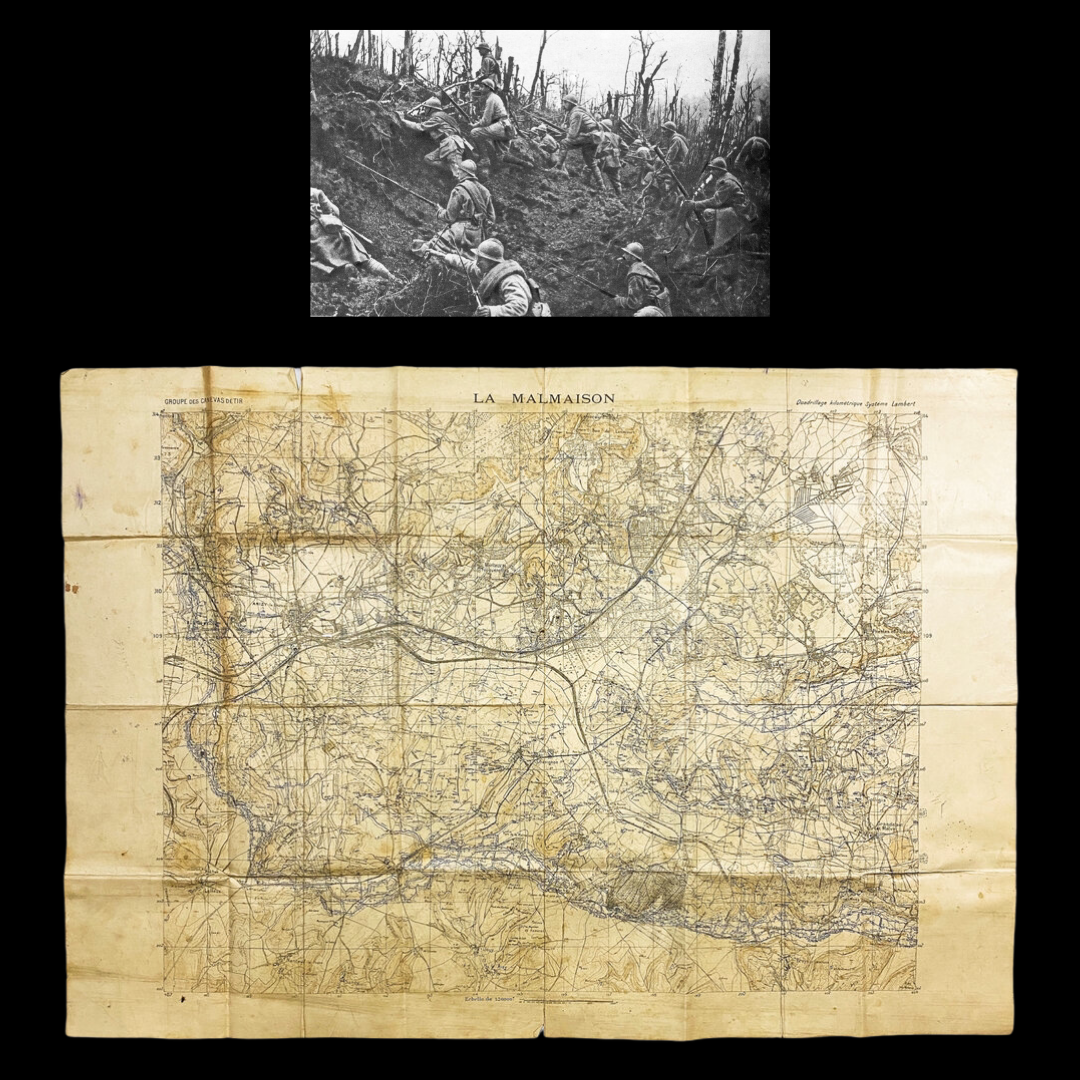


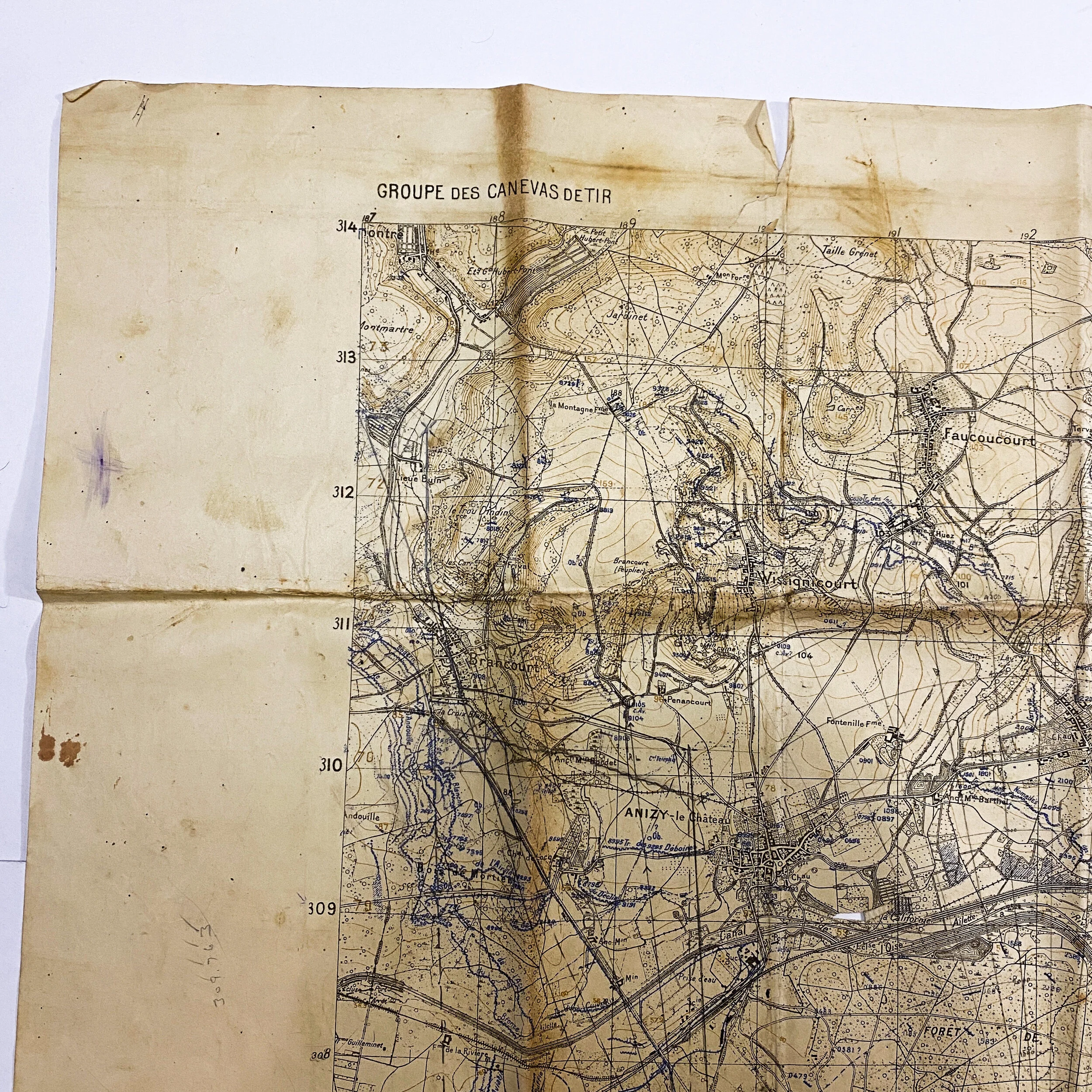
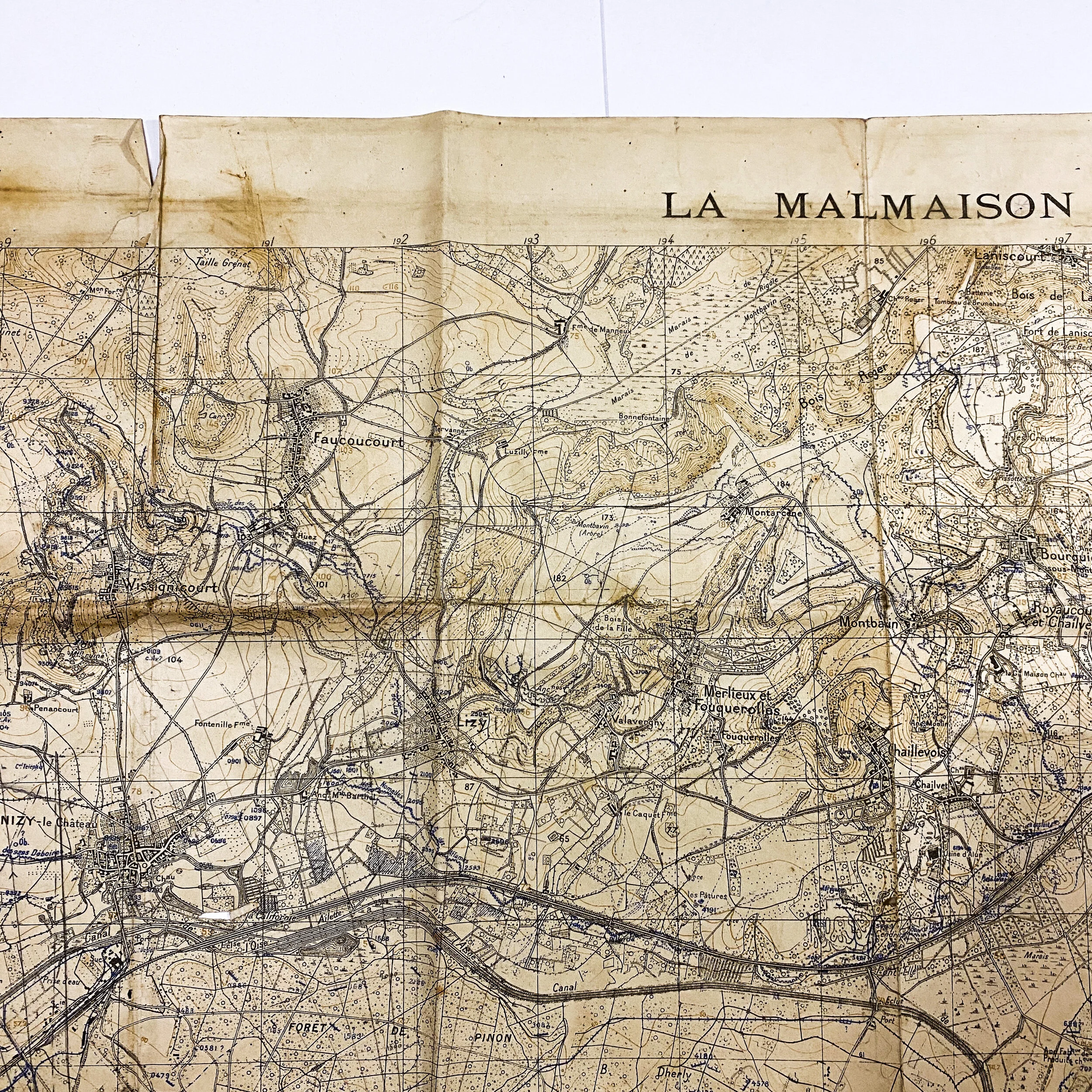
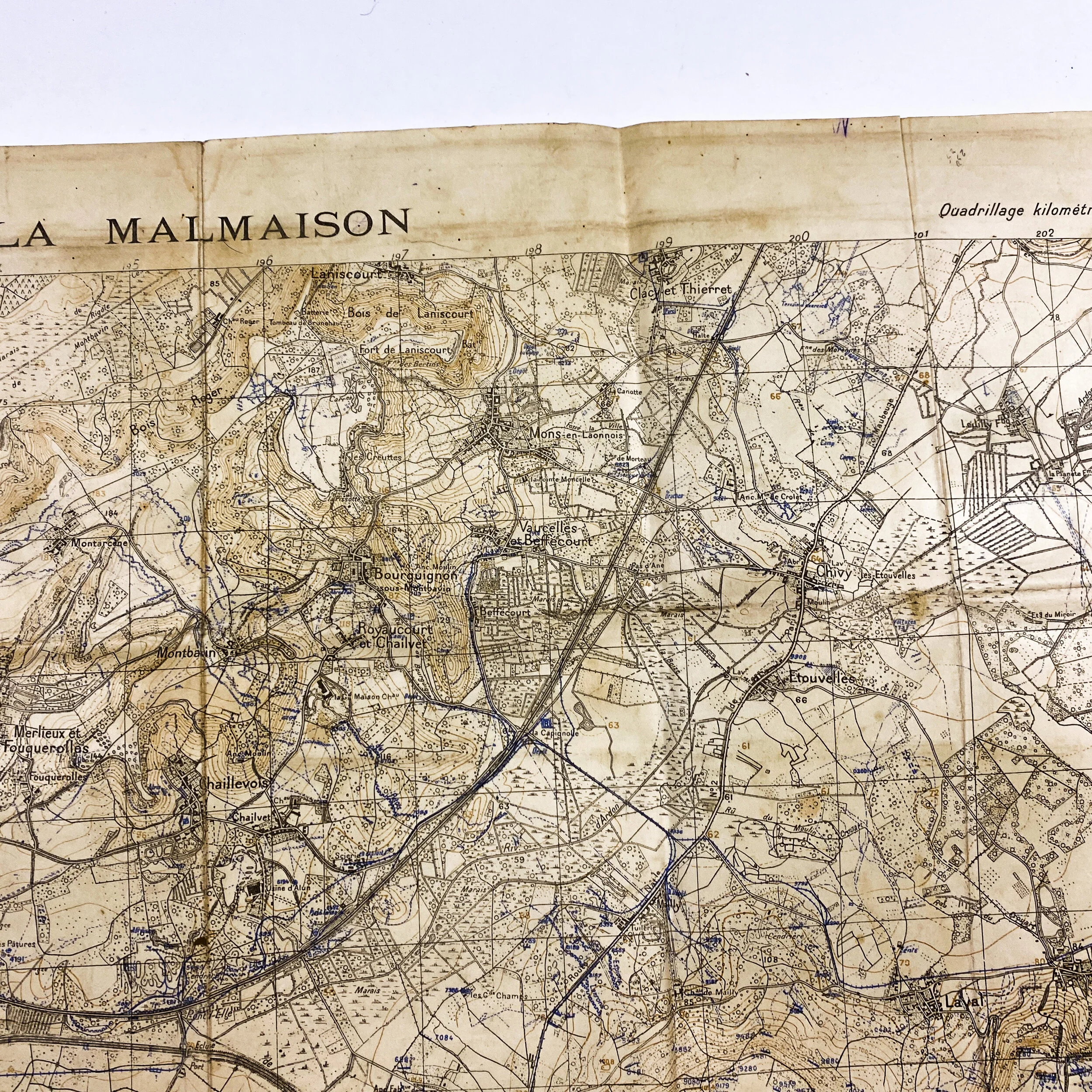
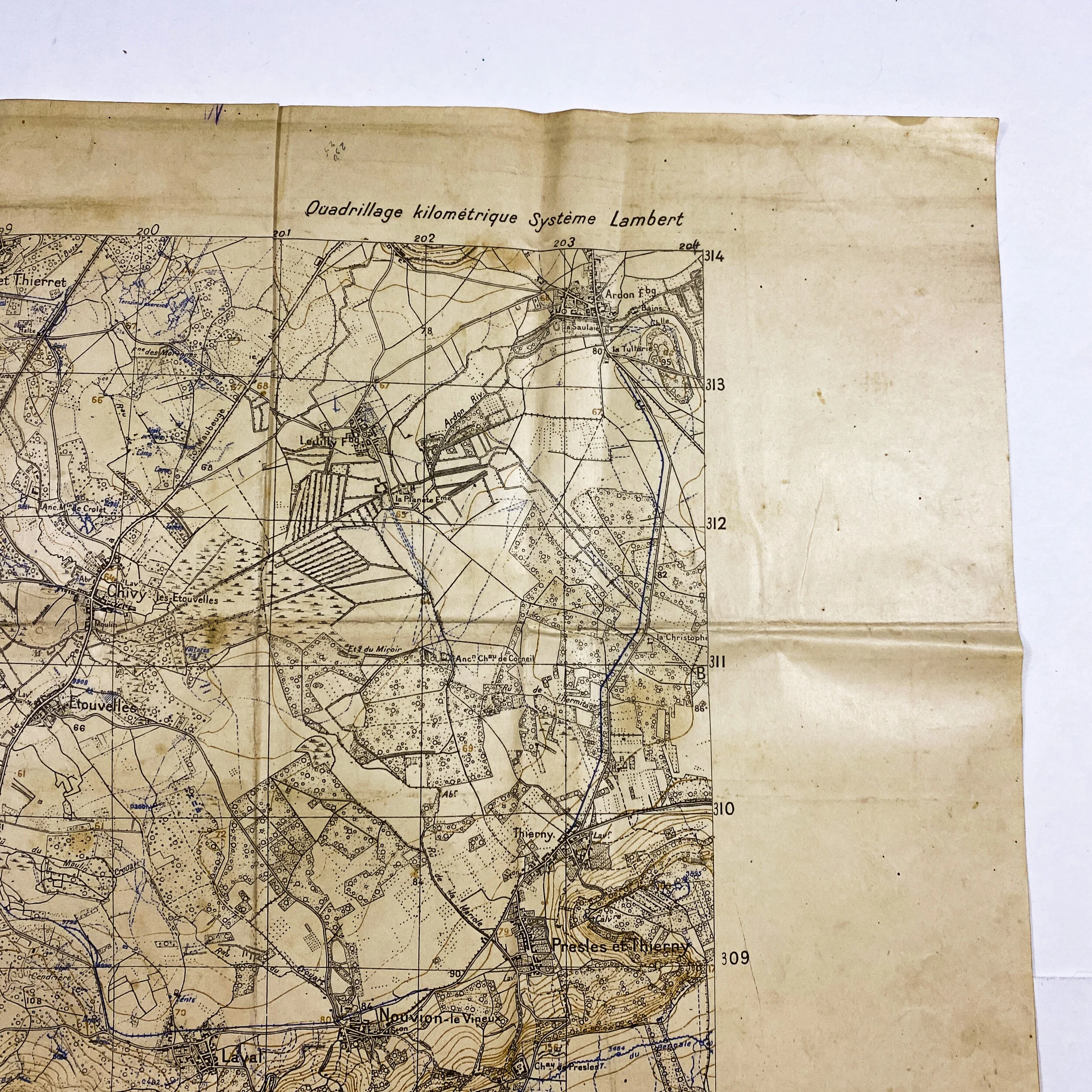

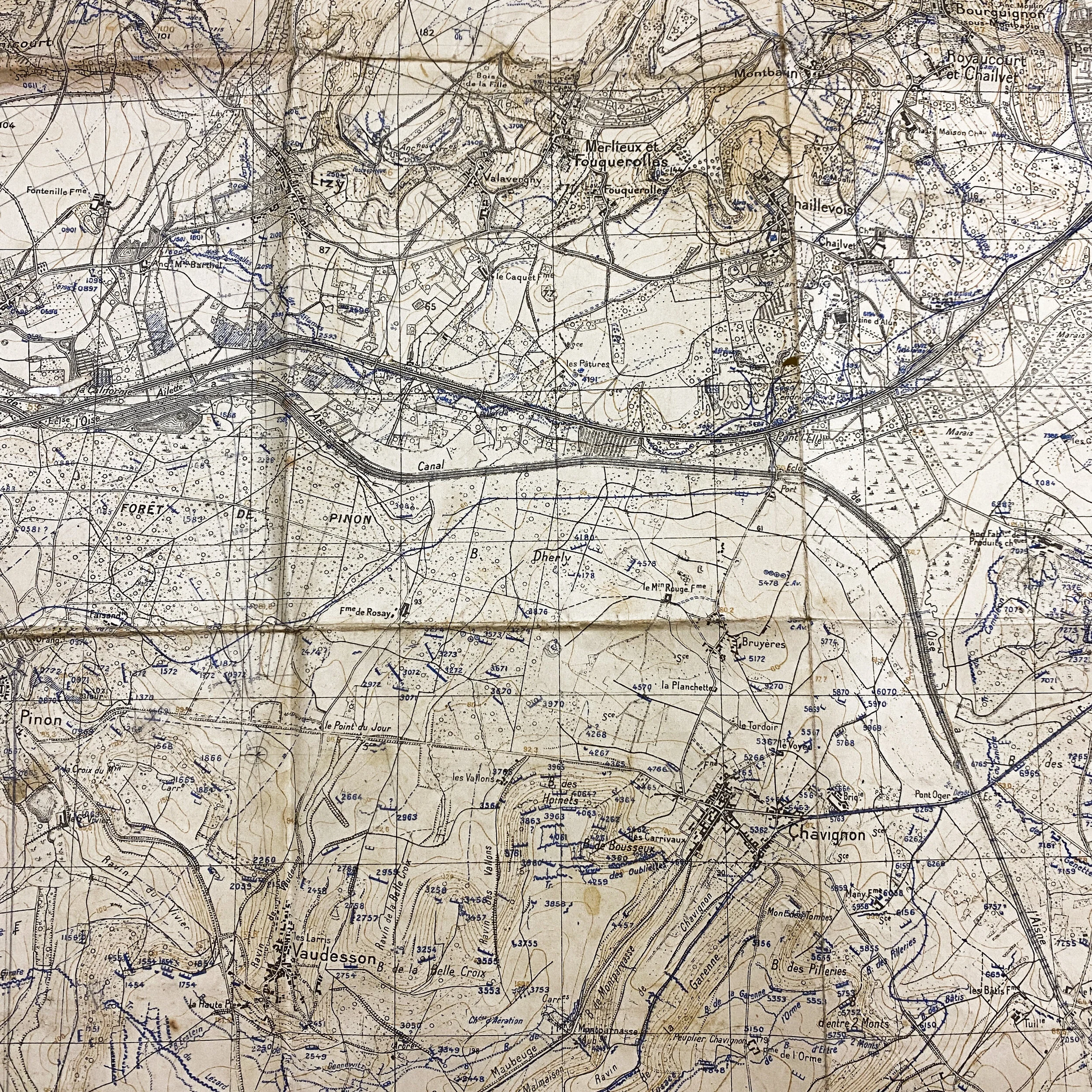




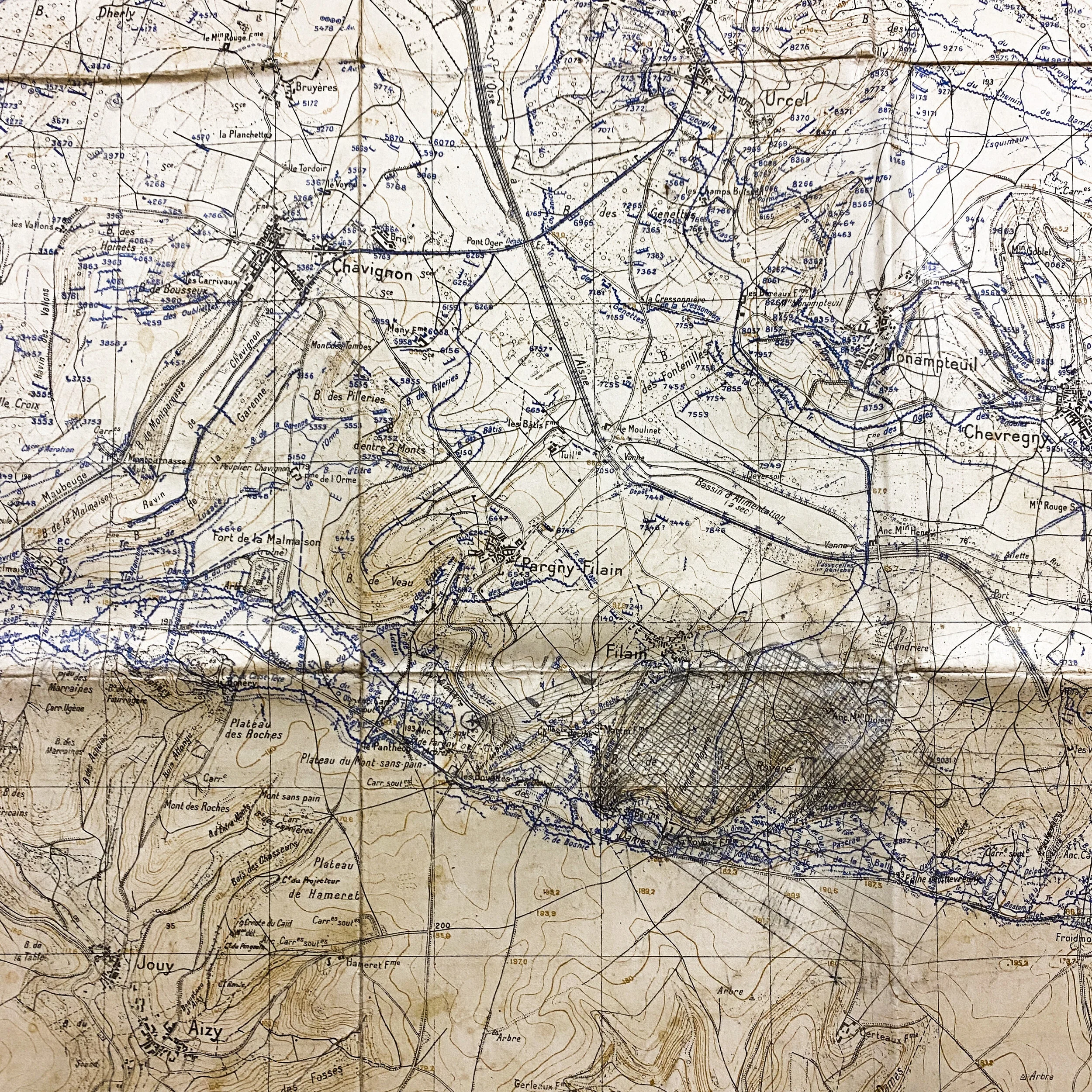
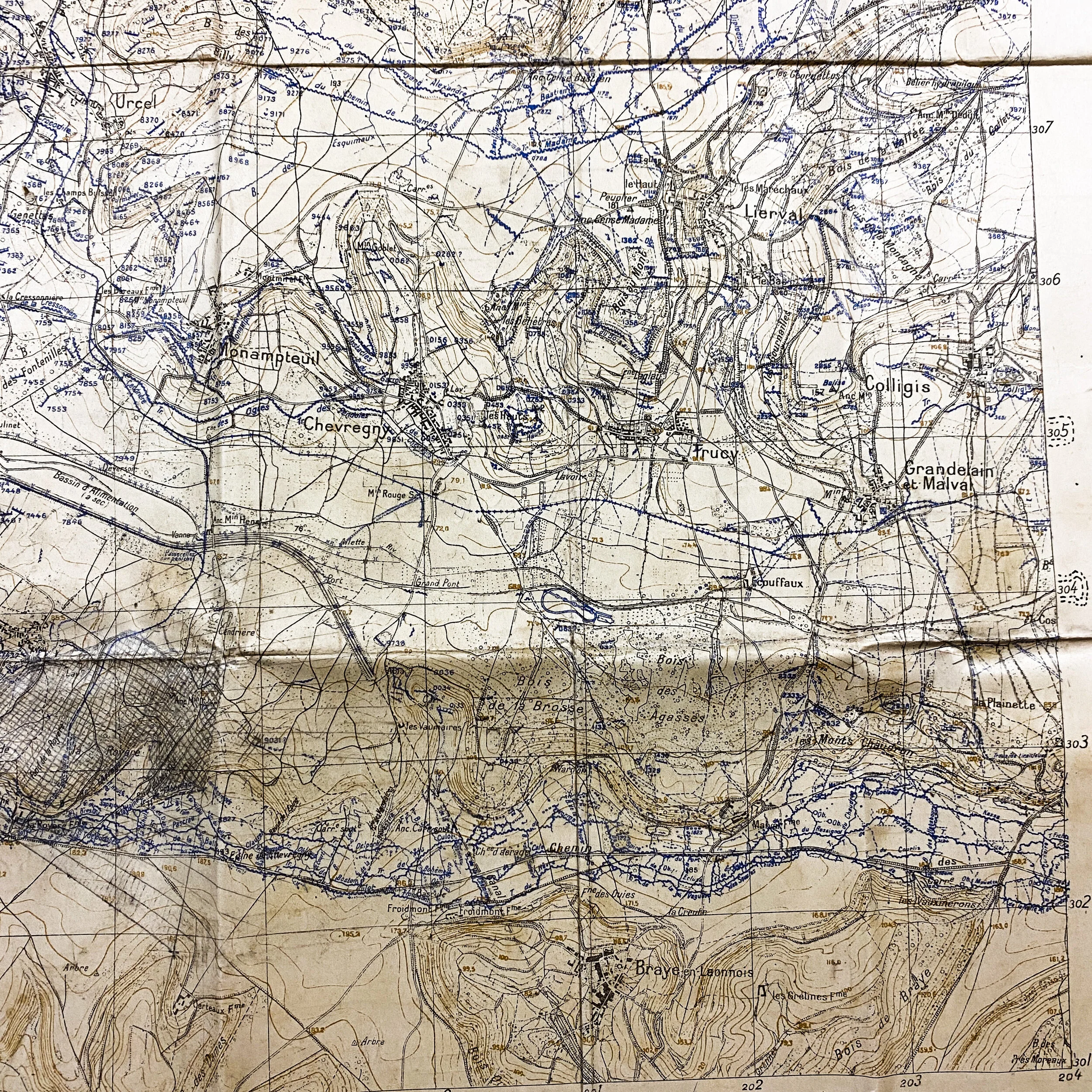
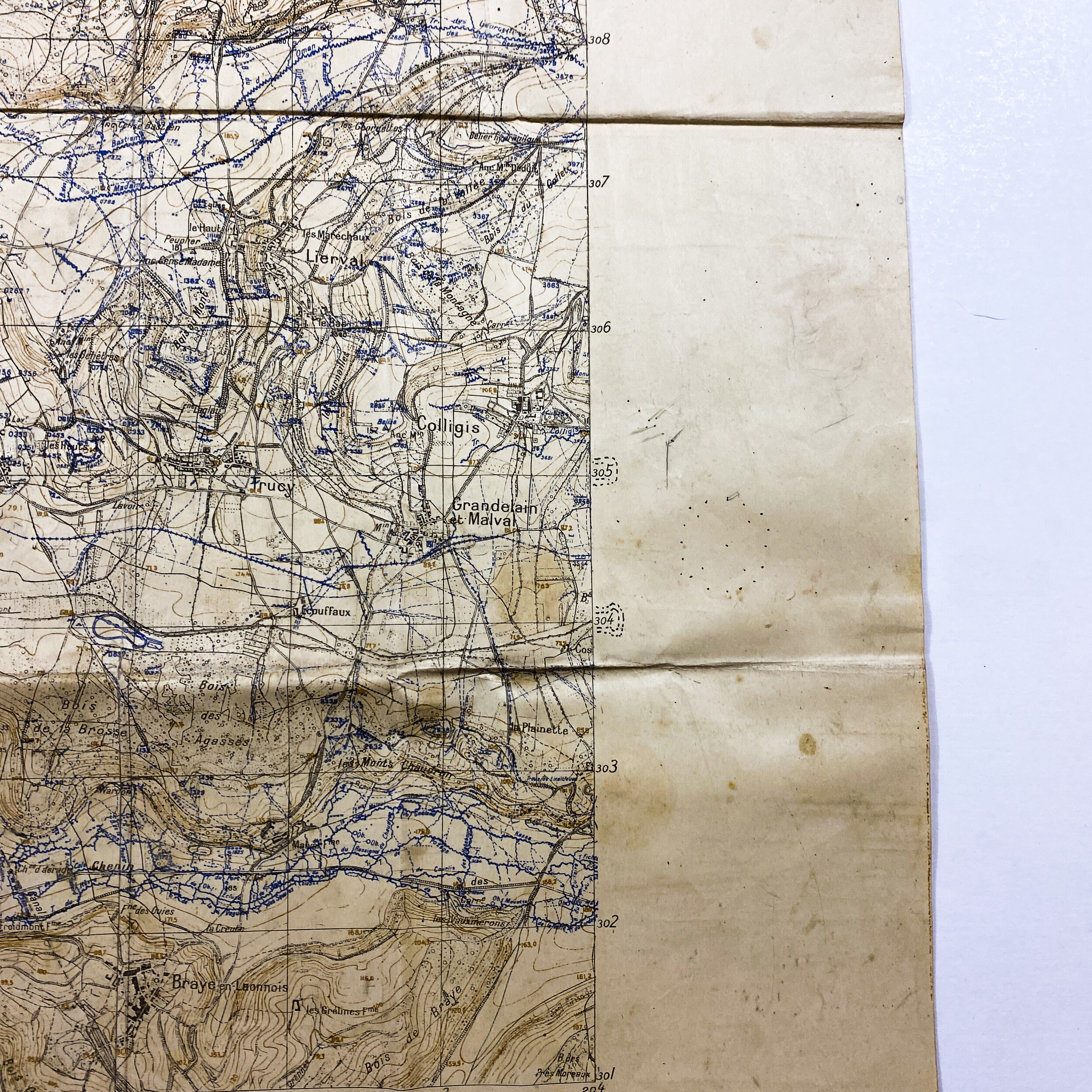
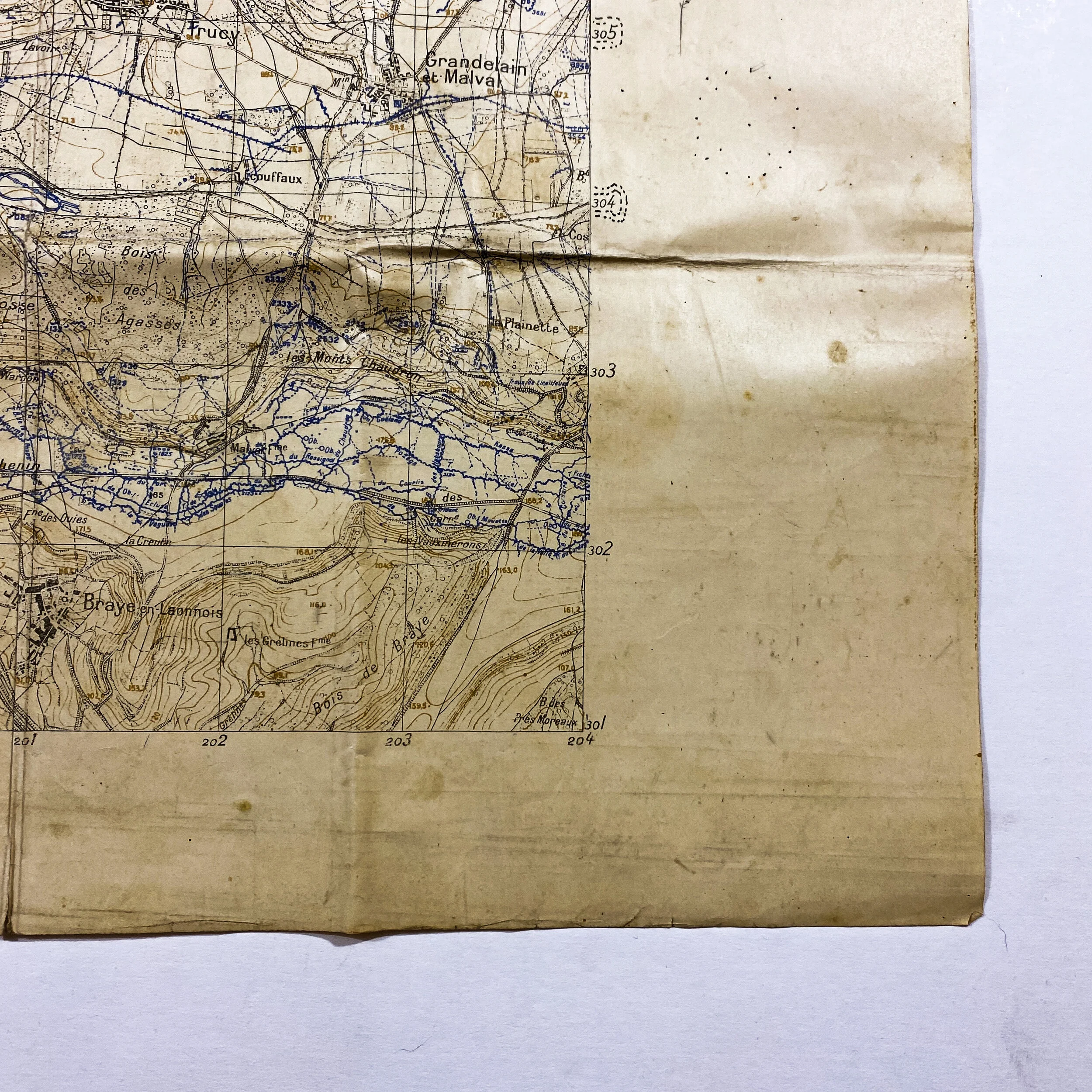
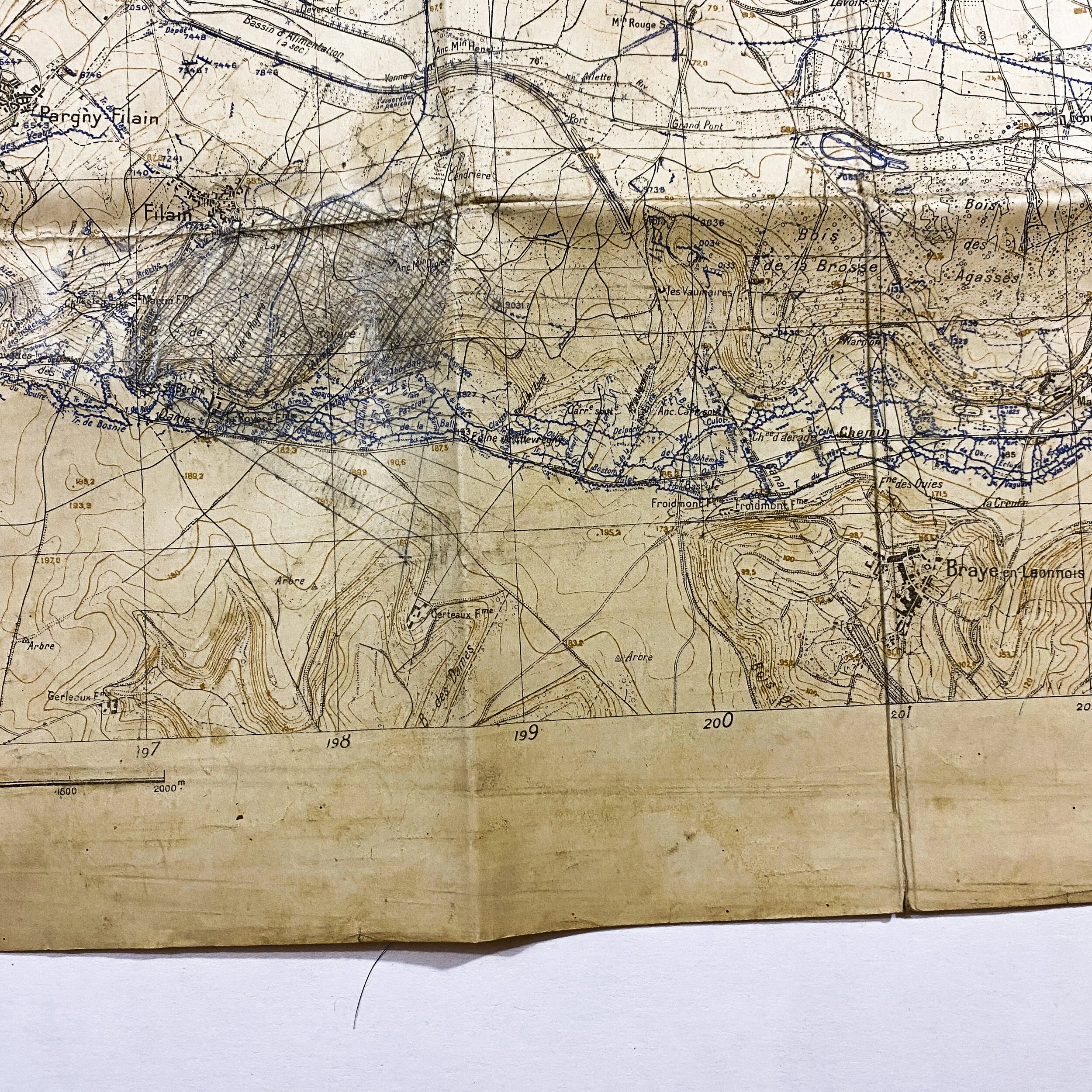
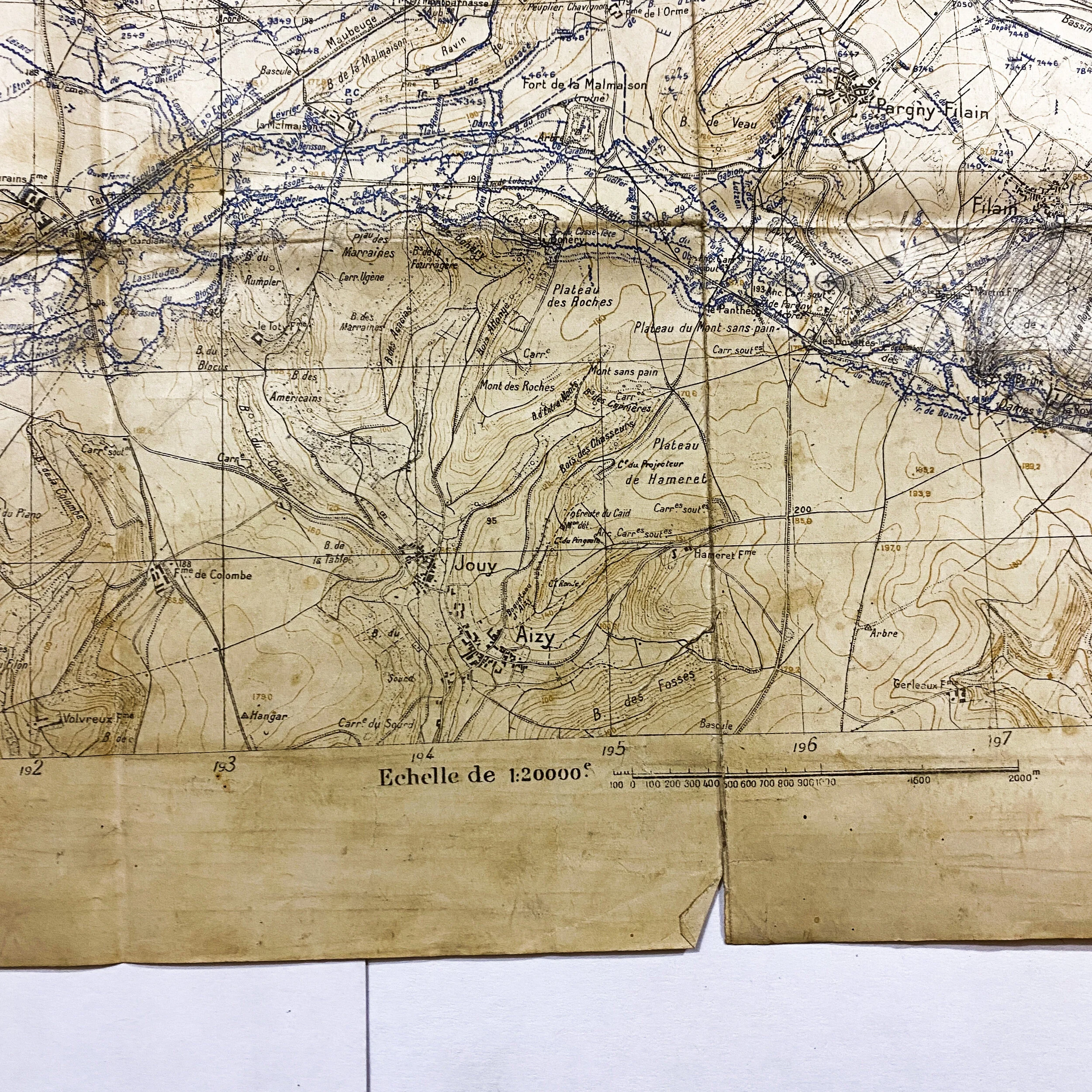
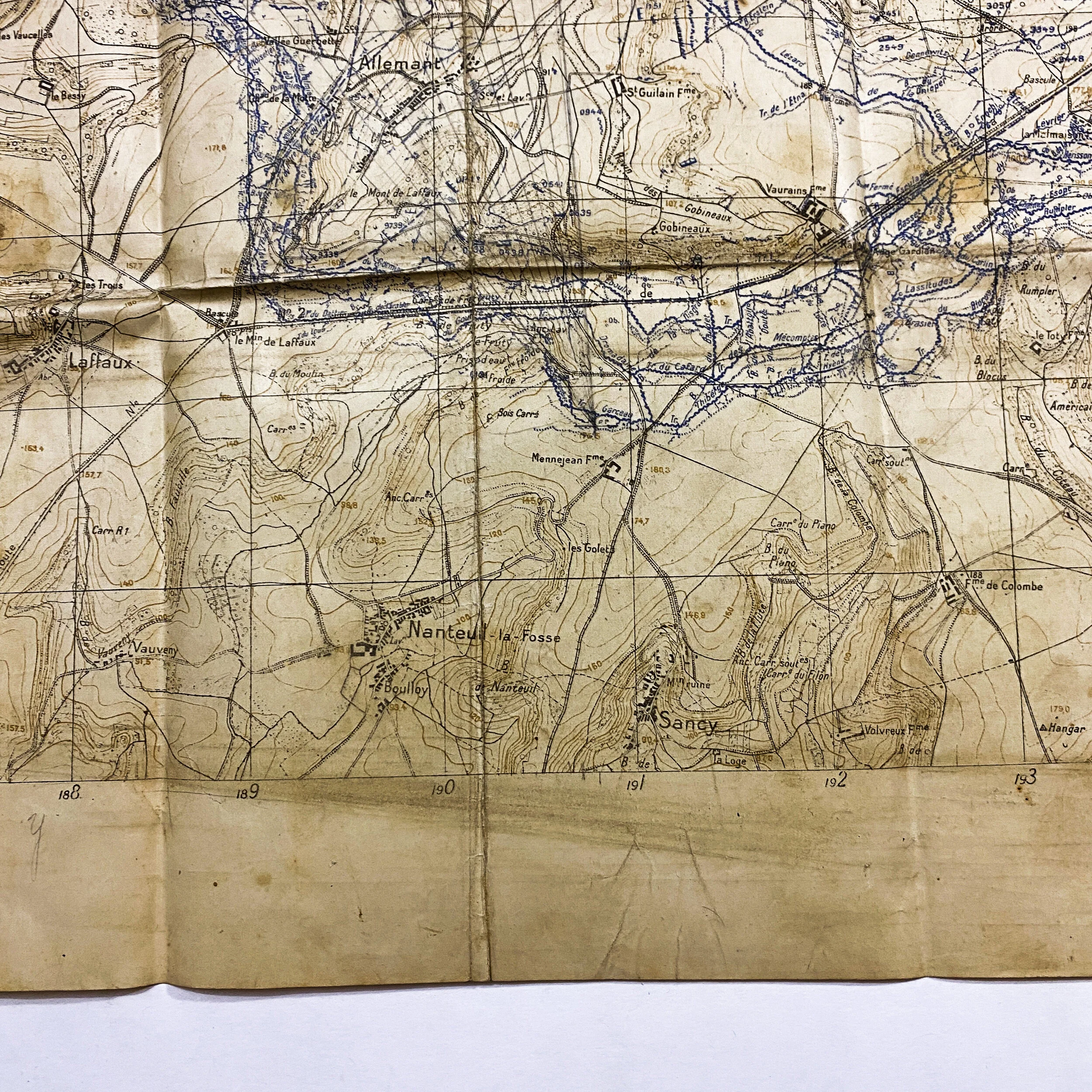

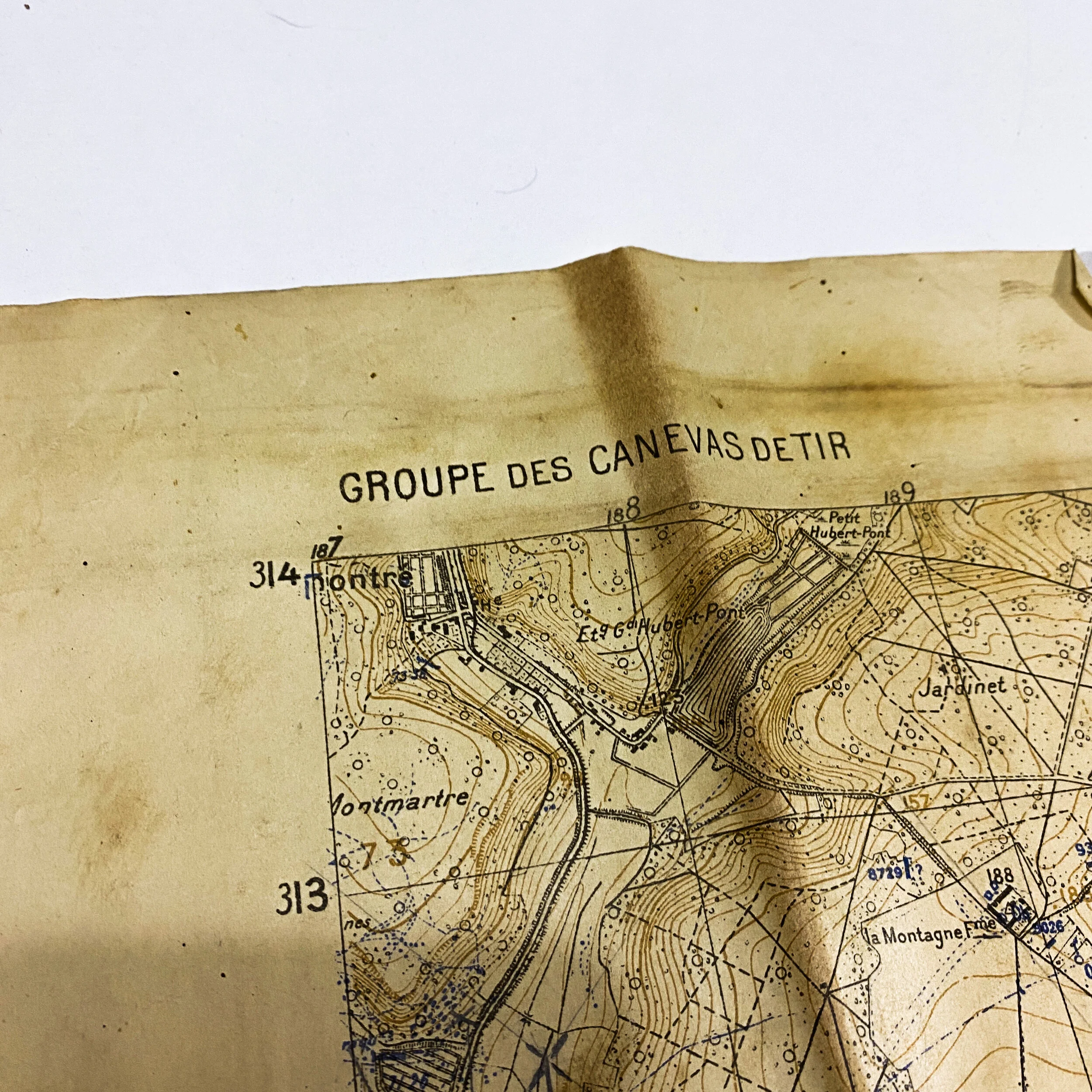
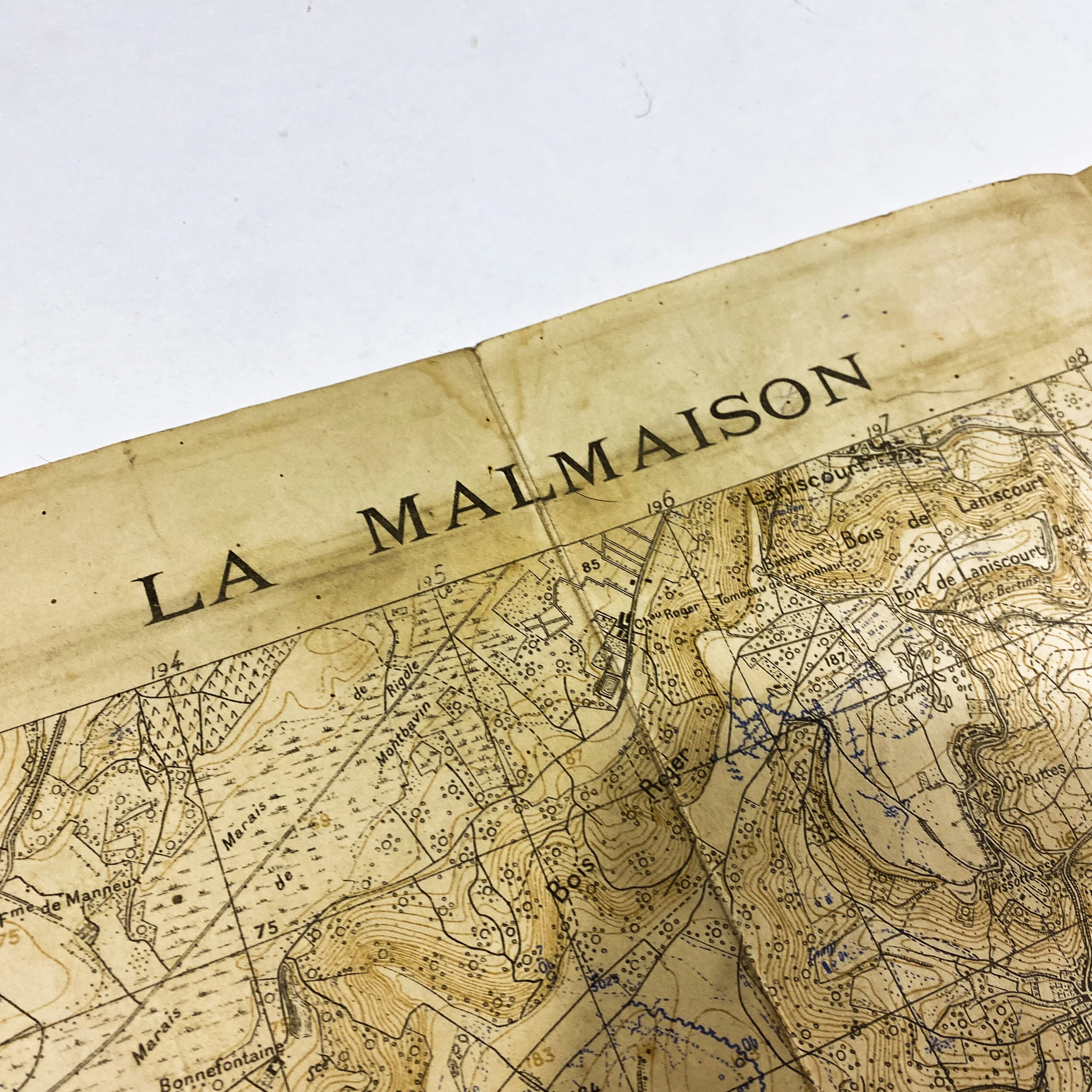
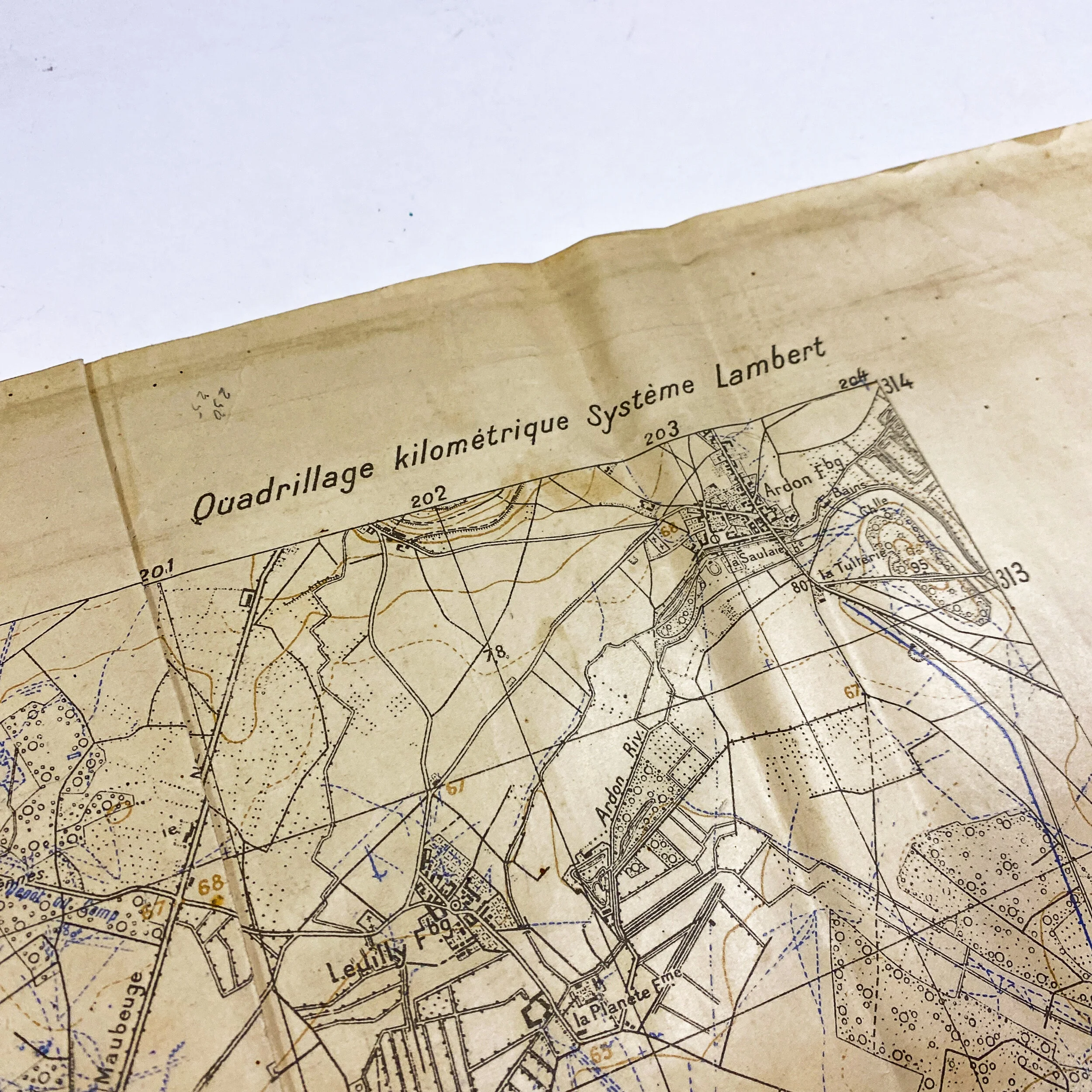
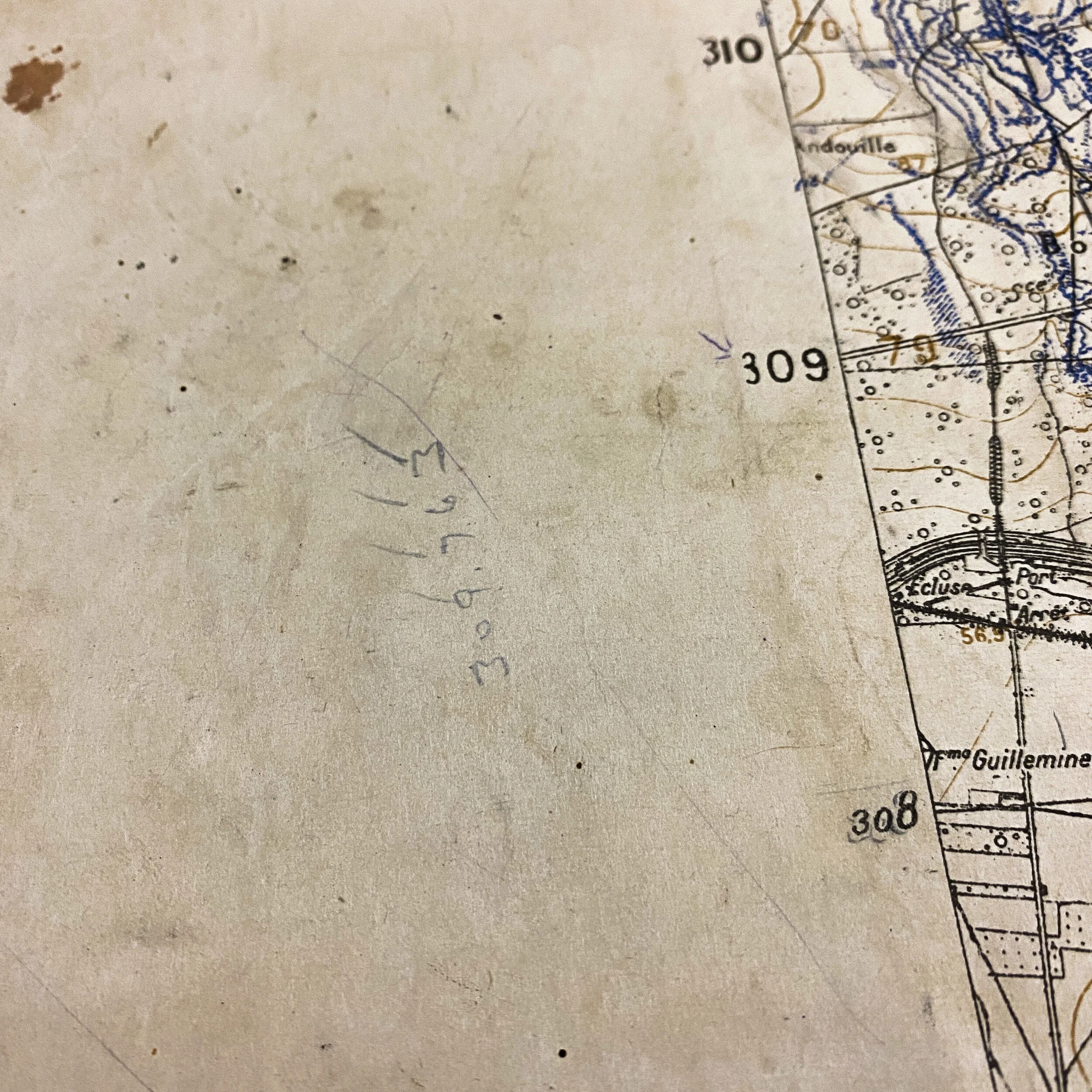
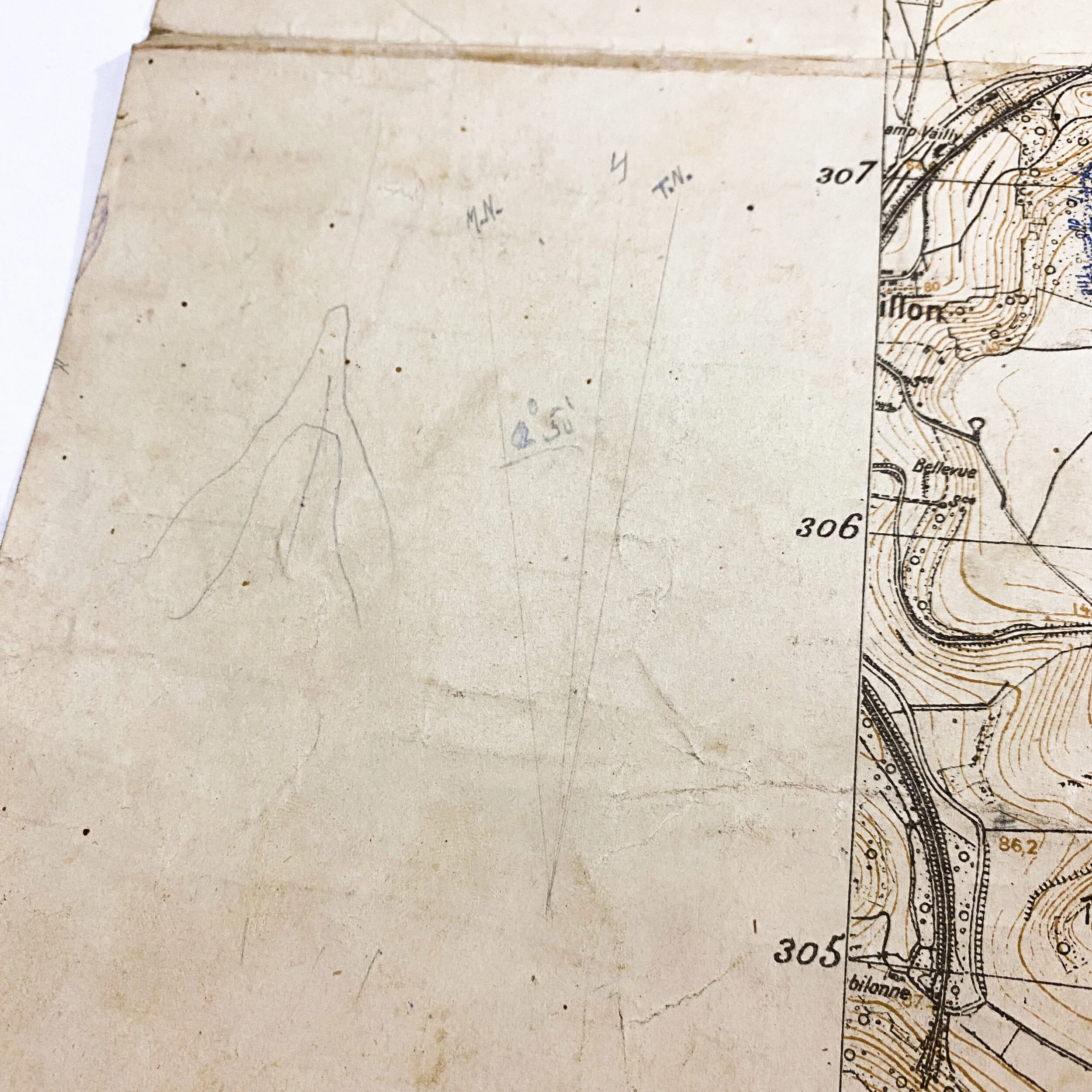
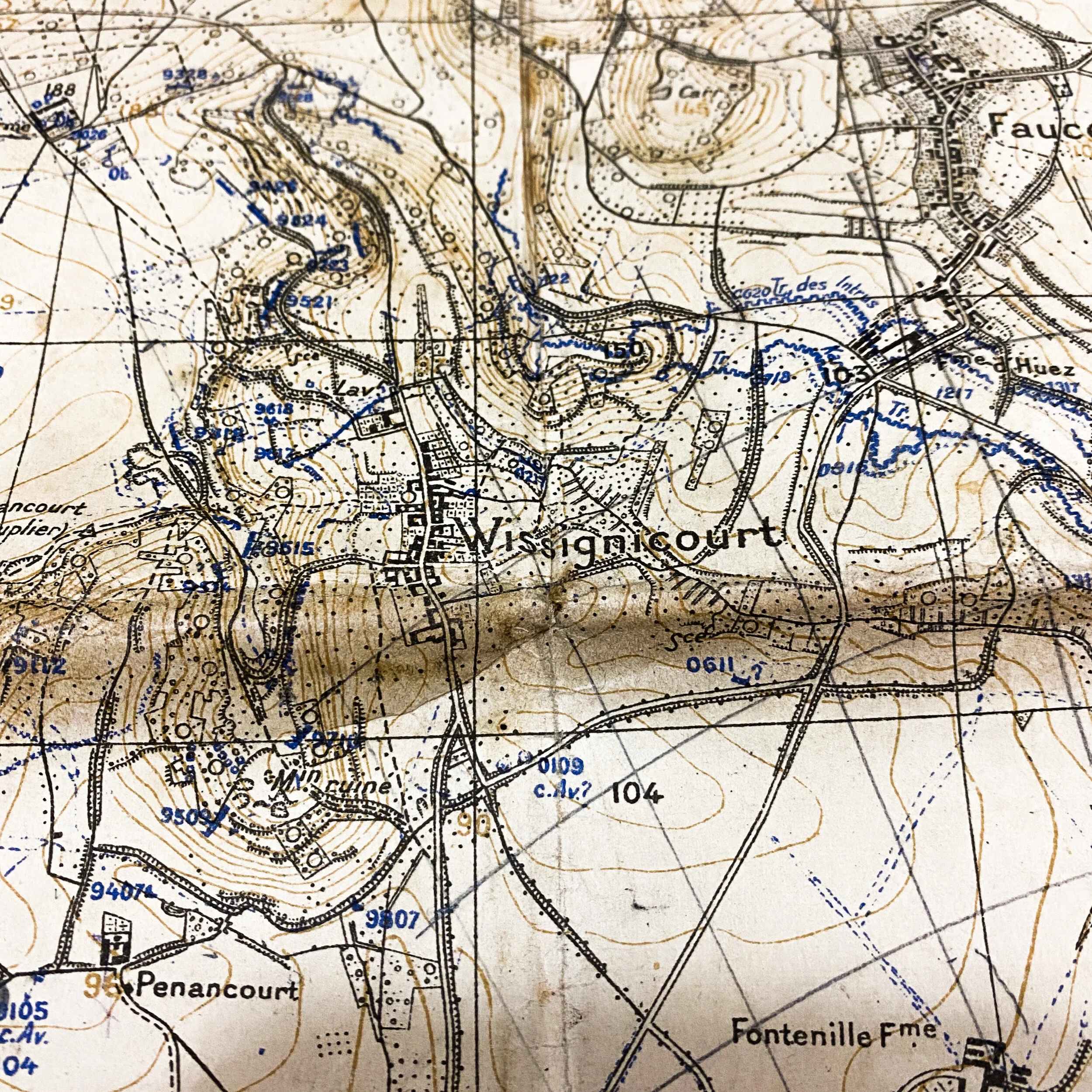
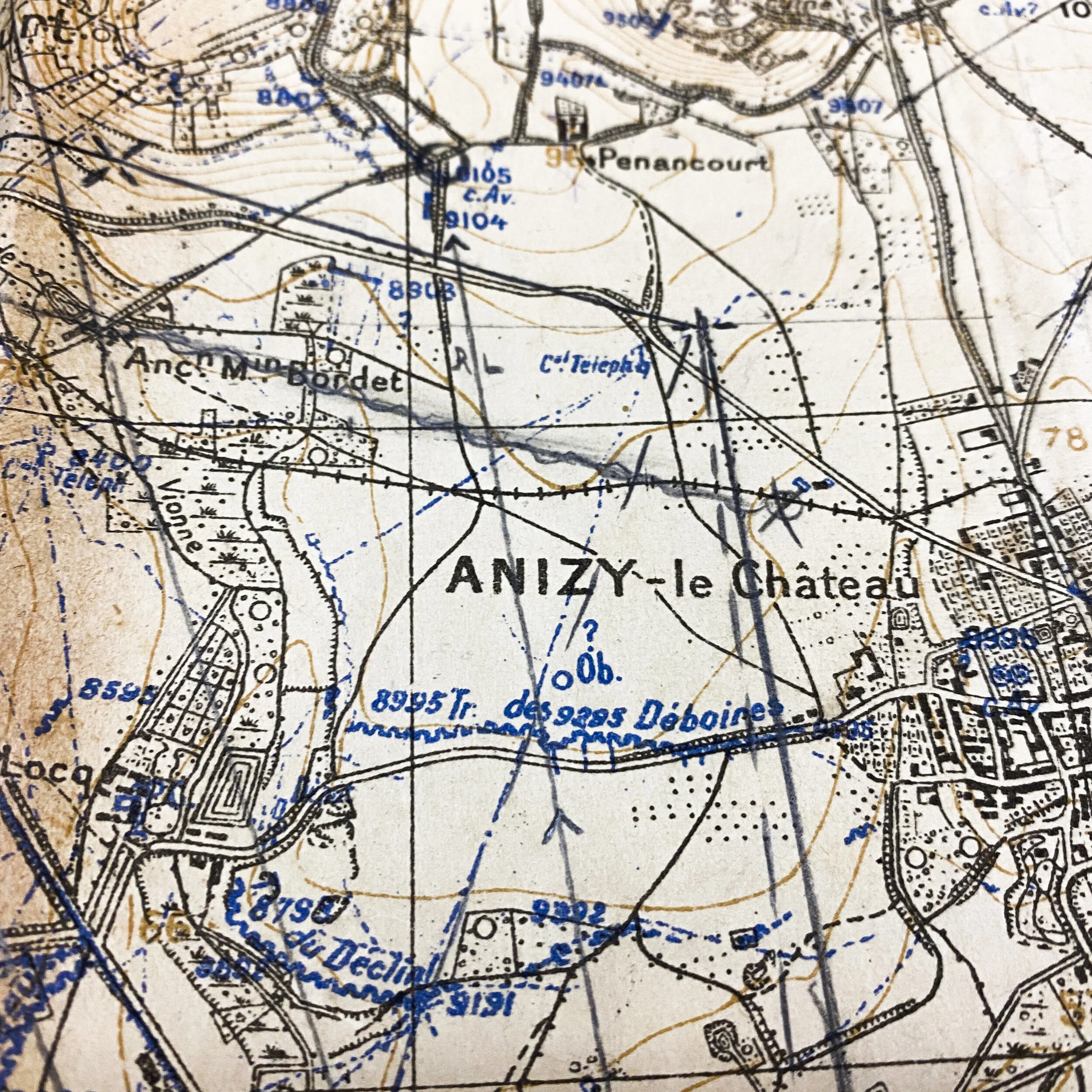





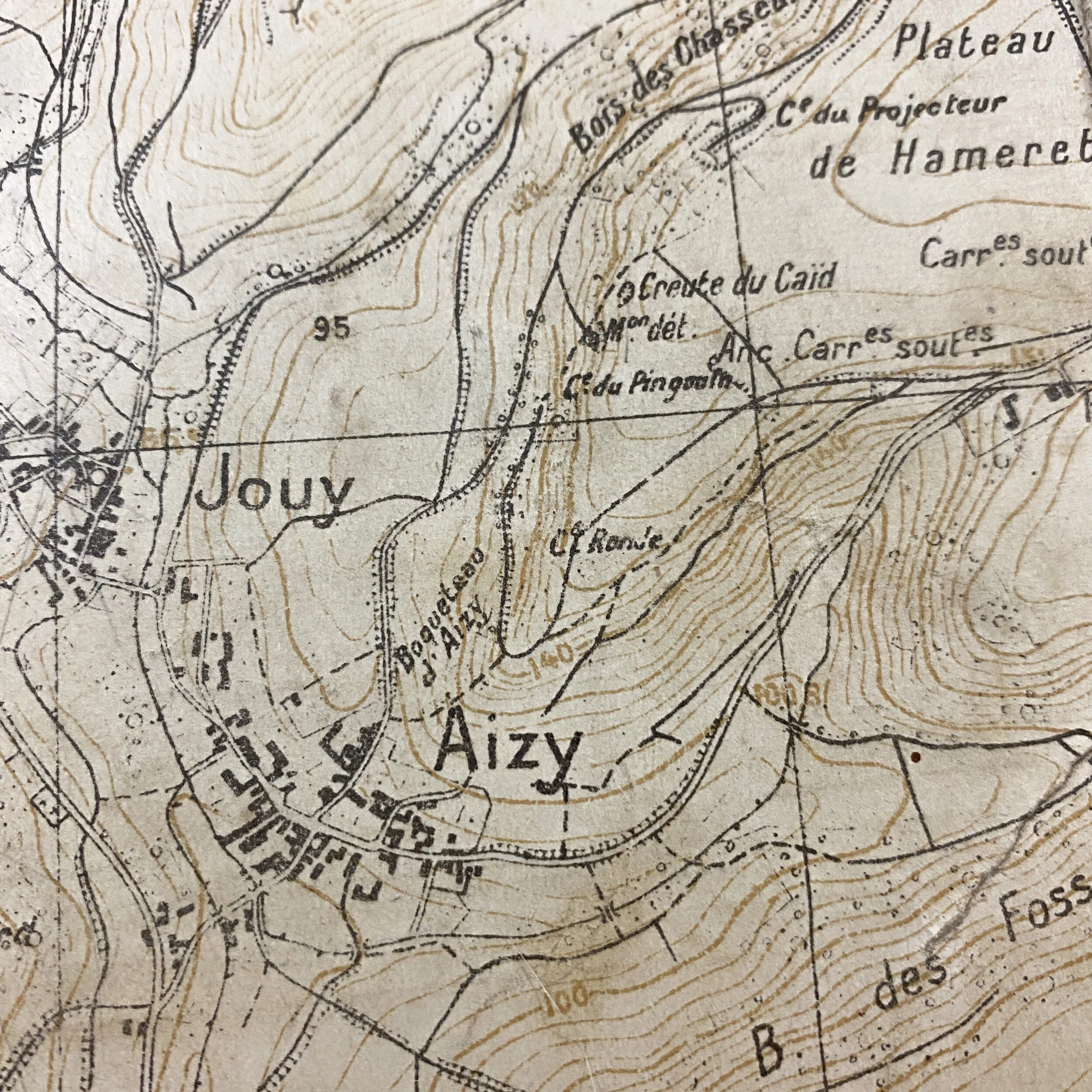
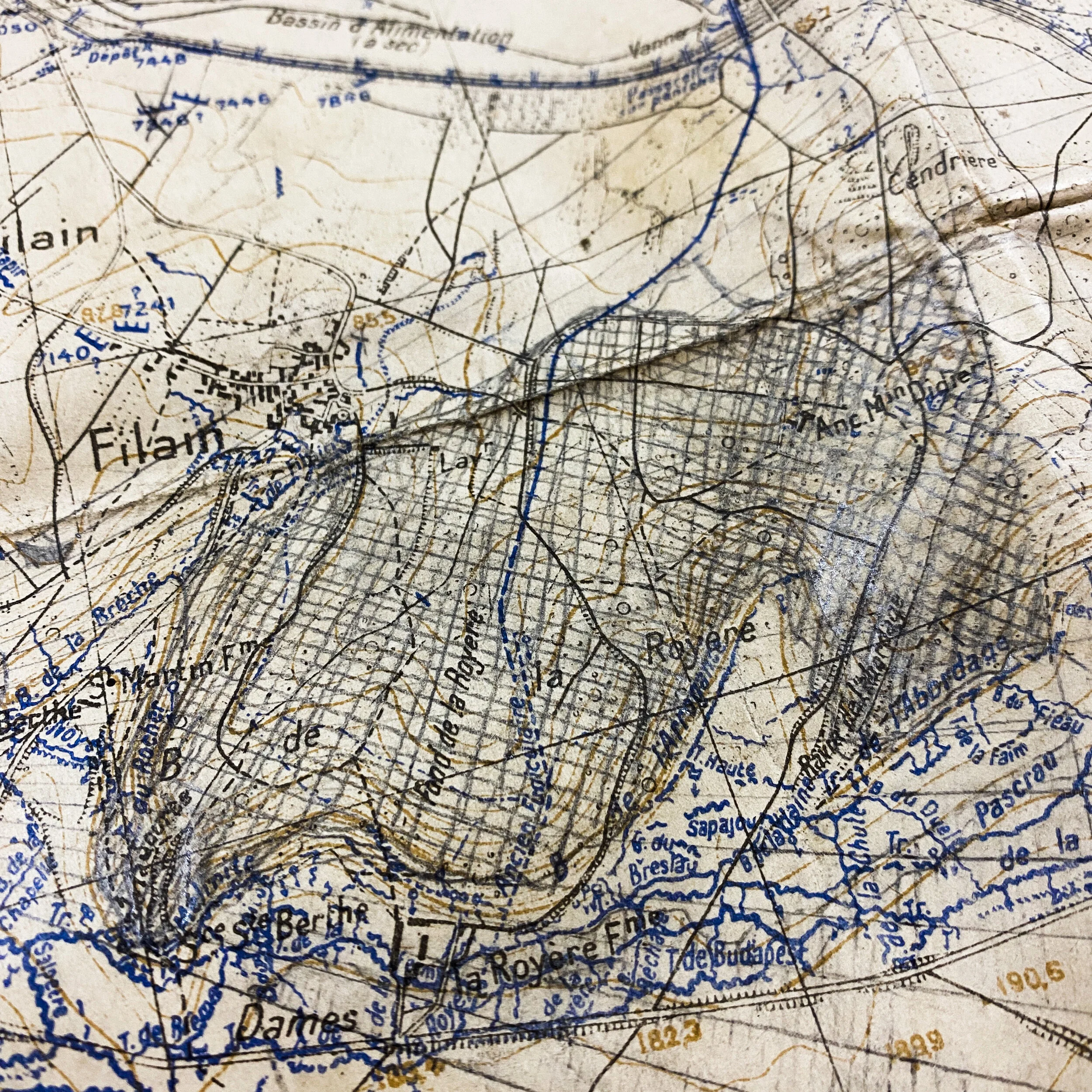

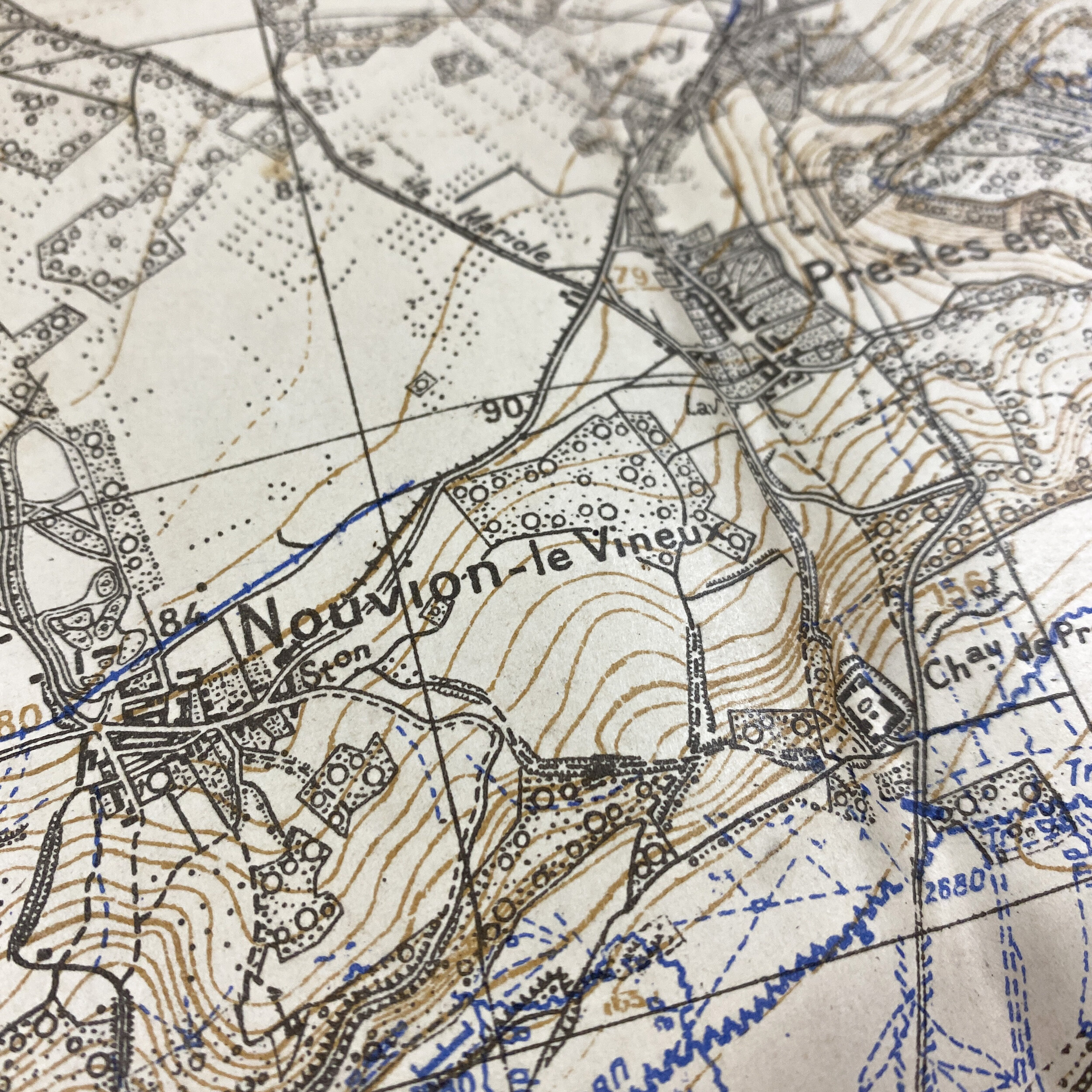

French Artilleryman Field Artillery Trench Map - Nivelle Offensive - Battle of La Malmaison - "La Malmaison"
Size: 42 x 29.5 inches
This World War 1 French printed trench and French artillerymen used map is updated and revised to show the most updated German trenches. Titled “La Malmaison”, this map shows the trenches and geographical landscape of the area held by Germans during the Battle of La Malmaison. The Battle of La Malmaison (Bataille de la Malmaison) from was fought October 23rd through the 27th, was the final French action of the 1917 campaign in the First World War, which had begun with the Nivelle Offensive. The French captured the village and fort of La Malmaison and took control of the Chemin des Dames ridge. This map would have been similar to those used in the planning of attack in the area, divisional movements, as well as artillery fire support. What makes this map so special are the French artilleryman annotations and artillery barrage notations seen on the left side of the map. Along with the written annotation seen on the left side of the map, it also contains pencil marks showing observation posts near the town of Allemant marking artillery ranges for past and future artillery barrages. It also shows markers for past firing spots marked with x's and circles. These are very prominent near the fortifications and village of Brancourt. These annotations are seen on the map marking some of the most important village and fortifications of the battlefield including Allemant, Anizy, Brancourt, Filain, and Montbain. For the added assistance of artillery firing coordinates, a transparent overlay of fine paper would have most likely been placed over this map and written on with H+ hours and firing lines ordered by French headquarters. It was using this very map the Allies began advancing behind a creeping barrage that French troops managed to seize the German-held village of La Malmaison.
Battle of La Malmaison:
The Battle of La Malmaison (Bataille de la Malmaison) from 23 to 27 October, was the final French action of the 1917 campaign in the First World War, which had begun with the Nivelle Offensive. The French captured the village and fort of La Malmaison and took control of the Chemin des Dames ridge. The German 7th Army (General Max von Boehn) had discovered French preparations for the attack and also identified the date and time. Boehn chose to defend the front positions, rather than treat them as an advanced zone and to conduct the main defense north of the Oise–Aisne Canal. The German artillery was outnumbered three-to-one and on the front of the 14th Division, 32 German batteries were confronted by 125 French, which silenced most of the German guns before the attack. Gas from French bombardments on low-lying land near the Oise–Aisne Canal in the Ailette valley, became so dense that it was impossible to carry ammunition and supplies forward or to remove the wounded.
Battalions from specialist German counter-attack divisions (Eingreifdivisionen) had been distributed along the front line and were caught in the French bombardments, German infantry shelters having been identified by French air reconnaissance and systematically destroyed. After the four-day bombardment was extended by two more days because of bad weather, the French XIV, XXI and XI corps of the Sixth Army, attacked on a 12.1 km (7.5 mi) front with six divisions.[a] Zero hour had been set for 5:45 a.m. but a German message, ordering the front garrisons to be ready at 5:30 a.m. was intercepted and the French start time was moved forward to 5:15 a.m.
The French infantry advanced behind an elaborate creeping barrage but the earlier zero hour meant that the attack began in the dark. Rain began to fall at 6:00 a.m. and the 63 attached Schneider CA1 and Saint-Chamond tanks were impeded by mud and 27 bogged behind the French front line. Fifteen tanks were immobilised crossing no man's land or in the German front line but the 21 remaining tanks and the infantry reached the German second position according to plan. The 38th Division captured Fort de Malmaison and XXI Corps took Allemant and Vaudesson. From 24 to 25 October, XXI and XIV corps advanced rapidly; the I Cavalry Corps was brought forward into the XIV Corps area, ready to exploit a German collapse. The German 7th Army conducted the Bunzelwitz Bewegung (Bunzelwitz Manoeuvre), a retirement from the Chemin-des-Dames to the north bank of the Ailette on the night of 1/2 November.